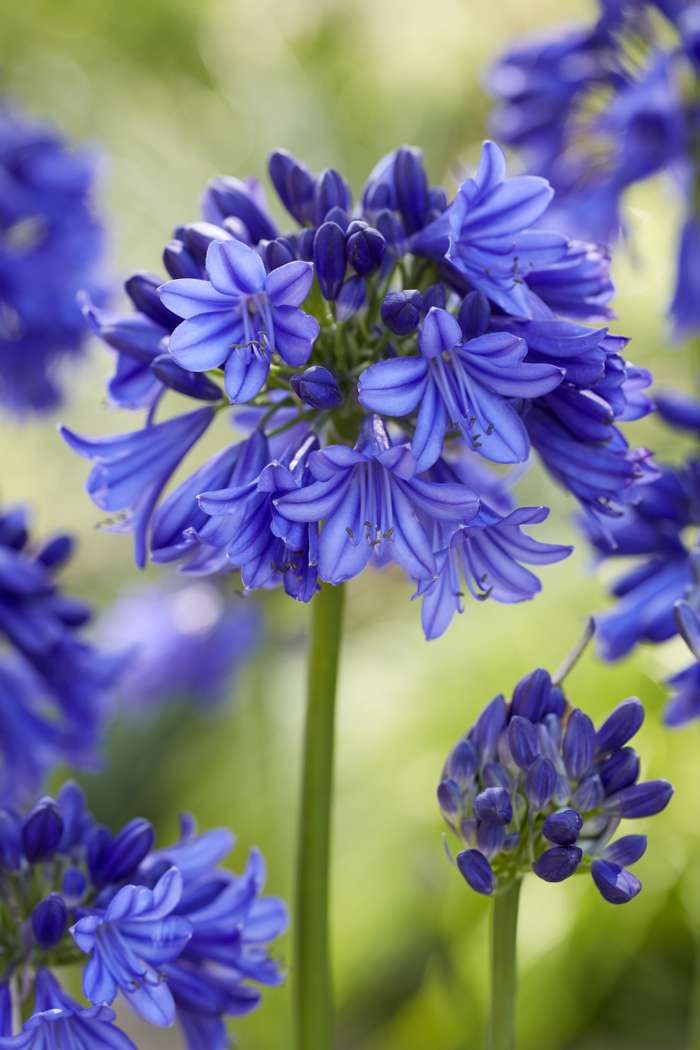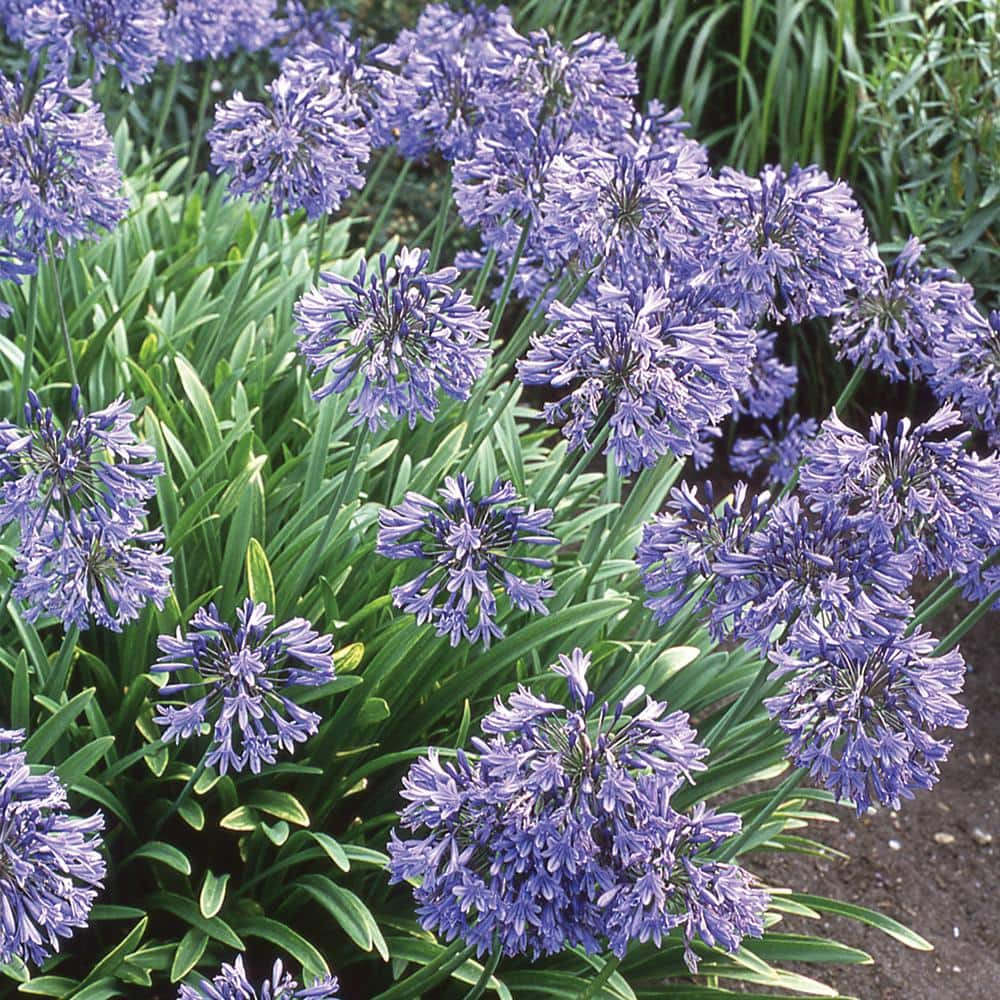Seasonal Agapanthus Treatment: Getting Ready For Winter Season and Summer
Seasonal Agapanthus Treatment: Getting Ready For Winter Season and Summer
Blog Article
Releasing the Secret to Effective Agapanthus Growing: Idea for a Flourishing Yard
In the realm of horticulture, cultivating agapanthus efficiently needs a critical method that includes various aspects of plant care. With cautious attention to detail, one can unlock the keys to supporting these stunning flowers, bring about a garden that grows with beauty and vibrancy. By comprehending the subtleties of agapanthus growing, one can develop an environment where these plants prosper and bloom generously. In the following conversation, we will check out necessary ideas and tricks that will certainly assist you in the direction of a thriving agapanthus yard, offering insights right into best methods, dirt problems, watering methods, and extra.
Growing Agapanthus: Ideal Practices
When growing Agapanthus, proper soil prep work is essential for guaranteeing successful development and growth of these beautiful flowers. Agapanthus, typically called Lily of the Nile or African lily, prospers in well-draining dirt with a somewhat acidic to neutral pH degree - Agapanthus. Prior to growing, it is critical to amend heavy clay soils with organic matter such as compost or peat moss to improve drainage and provide important nutrients for the plants
To grow Agapanthus, pick a location that receives complete sunshine to partial shade, as this will certainly advertise healthy and balanced development and bountiful blooming. Dig an opening twice the diameter of the plant's root ball and place the Agapanthus at the same depth it was formerly expanding. Delicately backfill the opening with dirt, pushing down securely to get rid of any type of air pockets around the roots.
Water the newly planted Agapanthus thoroughly and remain to maintain the dirt uniformly damp, especially during the plant's energetic expanding period. Agapanthus. Applying a balanced plant food once a month can better sustain the plant's growth and flowering. By following these ideal methods for planting Agapanthus, you can create a stunning display screen of these captivating blossoms in your yard
Suitable Soil Issues for Agapanthus
For optimum growth and growing success of Agapanthus plants, making sure the soil problems are perfect is crucial. Agapanthus likes soil that is rich in nutrients, so including a balanced plant food during the expanding season can promote healthy and balanced growth and lively blooms.

Watering and Feeding Tips
To ensure healthy growth and vibrant blossoms, correct watering and feeding strategies are necessary for effective Agapanthus growing. Agapanthus plants benefit from regular watering, especially throughout the growing period.
When it comes to fertilizing Agapanthus, a well balanced plant food with equivalent parts nitrogen, phosphorus, and potassium can be applied in the springtime to promote healthy and balanced growth and blooming. Slow-release fertilizers are perfect for supplying nutrients slowly over a prolonged duration. Prevent over-fertilizing, as this can result in excessive vegetation development at the cost of blooms.
In addition, including raw material like garden compost right into the soil can boost nutrient degrees and enhance dirt framework, helping in the total wellness of the Agapanthus plants. By complying with these watering and fertilizing pointers, gardeners can ensure their Agapanthus plants grow and create stunning display screens of flowers.
Pruning and Deadheading Methods
Proper trimming and deadheading methods play an important duty in preserving the health and aesthetics of Agapanthus plants, enhancing the important techniques of watering and fertilizing for effective growing. Trimming Agapanthus includes getting rid of spent blossom heads, yellowing navigate to these guys or dead fallen leaves, and general shaping of the plant to advertise better development. Deadheading, the process of eliminating discolored blossoms, not just enhances the plant's look however additionally encourages additional flowering.
When deadheading Agapanthus, it is recommended to trim off the flower stem at the base utilizing sharp, tidy shears. This process reroutes the plant's power from seed production back right into root and foliage development, advertising a healthier and a lot more robust plant. Routine deadheading can expand the blooming duration of Agapanthus and avoid self-seeding, which can cause overcrowding.
In regards to pruning, Agapanthus normally gain from a light trim after flowering to clean up the plant and urge fresh development. Cutting down the invested blossom stems and removing any type of dead or broken vegetation helps preserve the plant's vitality and total look. However, it is necessary to stay clear of cutting into the crown of the plant, as this can compromise its wellness.

Protecting Agapanthus From Pests and Diseases
Carrying out efficient parasite and condition monitoring approaches is crucial to protecting the health and wellness and vitality of Agapanthus plants in cultivation. Agapanthus are typically sturdy plants, however they can still fall sufferer to numerous insects and diseases otherwise properly cared for. One common pest that influences Agapanthus is the Agapanthus borer, a caterpillar that passages right into the plant, creating damages to the flowers and leaves. To avoid infestations, normal examination of the plants is crucial. If borers are detected, they can be by hand eliminated, or insecticidal soap can be utilized as a control step.
In addition to parasites, Agapanthus are prone to diseases such as origin rot and fungal fallen leave spots. These concerns can commonly be avoided by ensuring correct drain and avoiding overwatering. If indicators of illness show up, impacted parts of the plant must be quickly gotten rid of to stop further spread. Fungicides may additionally be made use of as a therapy action, adhering to the producer's guidelines thoroughly. By remaining alert and addressing bug and disease concerns promptly, garden enthusiasts can aid their Agapanthus thrive and prosper.

Final Thought
To conclude, effective farming of agapanthus requires proper planting techniques, optimal dirt problems, ample watering and feeding, normal trimming and deadheading, and defense from pests and diseases. By following these techniques and read what he said ideas, garden enthusiasts can make sure a growing yard filled up with lovely agapanthus flowers. Agapanthus. Keep in mind to preserve constant care and attention to detail to promote the wellness and long life of these magnificent plants
When growing Agapanthus, appropriate soil preparation is important for ensuring successful development and growth of these attractive blossoms.Water the recently grown Agapanthus completely and continue to keep the dirt equally damp, particularly during the plant's energetic expanding season.For optimal development and growing success of Agapanthus plants, making sure the soil conditions are perfect is essential. When transplanting or planting Agapanthus, make certain the dirt is well-prepared click here now to offer the necessary structure for the plants to develop themselves successfully. One usual bug that impacts Agapanthus is the Agapanthus borer, a caterpillar that tunnels right into the plant, causing damages to the blossoms and leaves.
Report this page